
Current Plant List
By Charlie / in General / May 14, 2019

Yesterday and today our garden has received some very much appreciated rain. We do not have any irrigation in the majority of our flowerbeds so I will show you photos taken this morning, between rain downfalls, of some of the beautiful flowers our native garden plants have produced after a long hot summer with almost no rain. These plants demonstrate very clearly that the majority of our Western Australian native species are very waterwise and that they require little or no water. Anyone with an Australian native garden that is watering more than once a month in summer is killing their plants with kindness. Plants that receive too much additional water do not live as long as those that receive little or no additional water. There are many other autumn flowering plants that I could have photographed today, some of them also continue flowering into winter. For example, all the Correas, some Scaevolas, many Hakeas, Boronia crenulata, some Lechenaultias, this list could very easily go on!
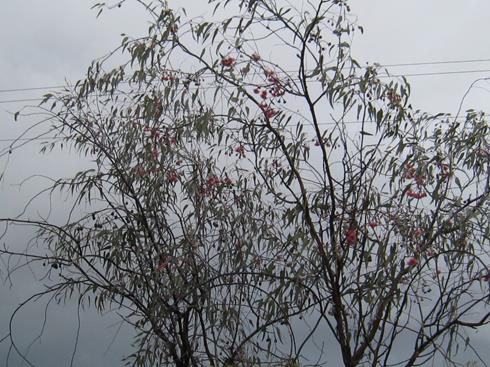
Eucalyptus caesia commonly called Silver Princess. When photographed against a grey sky like we have today, it is very attractive.
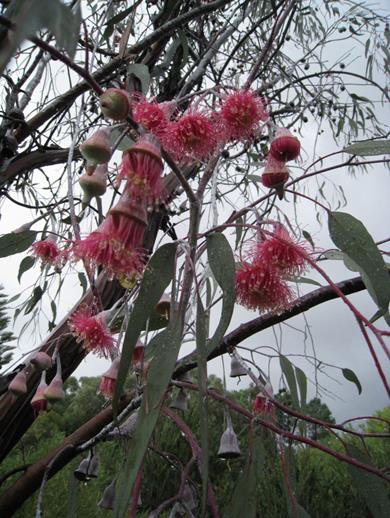
The beautiful flowers of the Eucalyptus caesia or Silver Princess, a grey sky behind and covered in welcome rain drops.
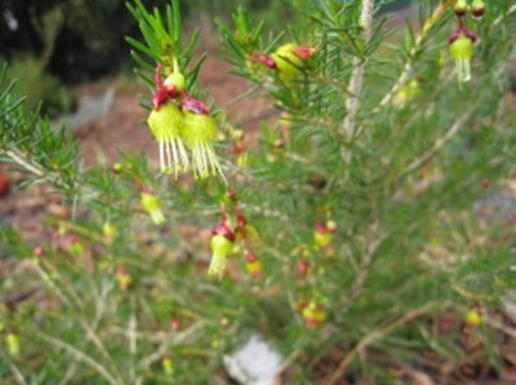
Verticordia staminosa which is a very waterwise small shrub.
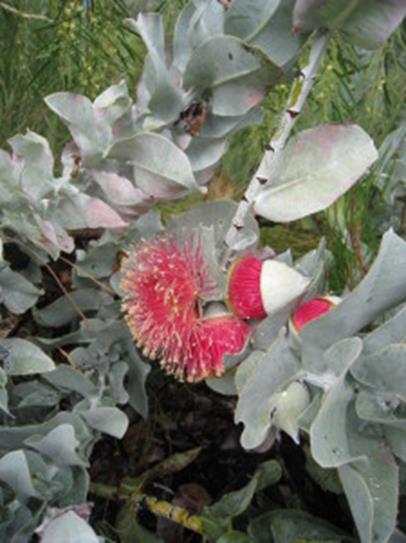
Eucalyptus macrocarpa which is commonly called Rose of the West.
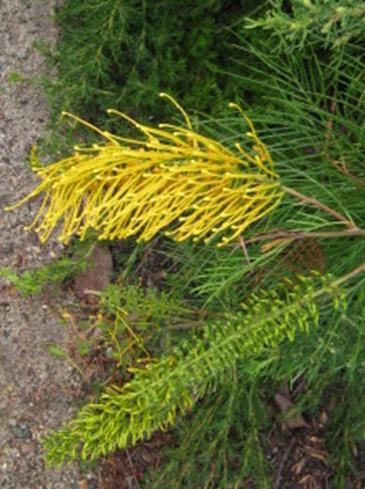
Grevillea Golden Lyre has just started to flower after a long dry summer with no irrigation.
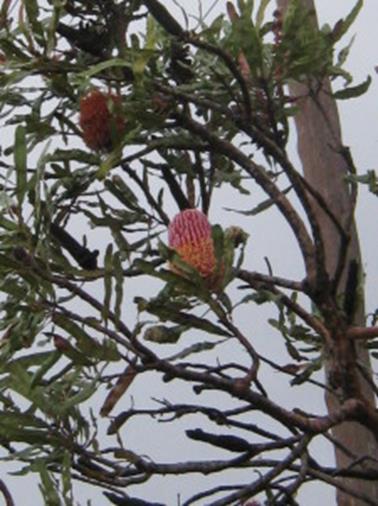
The beautiful Banksi menziesii or Firewood Banksia that has been flowering for several weeks.
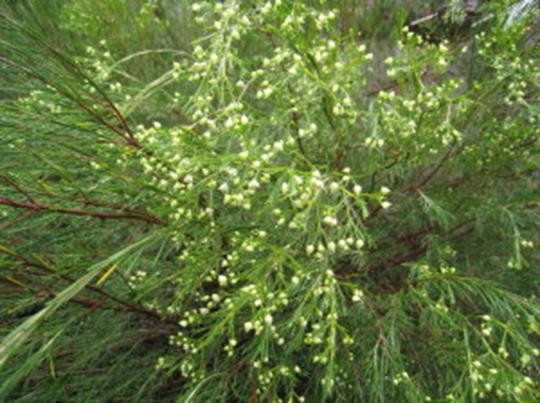
The lemon bud wax of Chamelaucium Lemon Drops. It makes a good addition to flower arrangements.
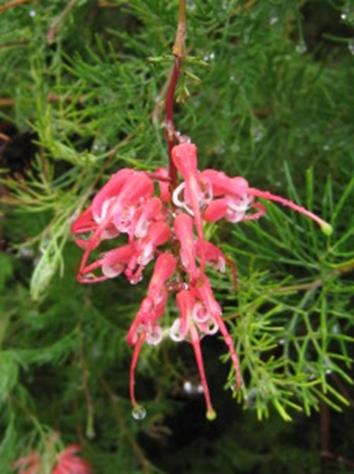
Grevillea Ellendale Pool which has been flowering for the past 4 months with no irrigation making it very waterwise.
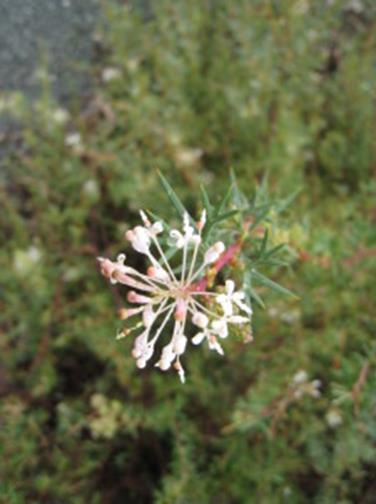
Grevillea phanerophlebia with it masses of white flowers is very waterwise and flowers all year.
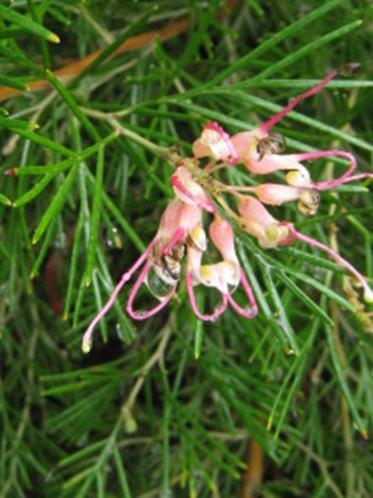
Grevillea Carramar Gold that has been growing in our garden for about 20 years, is very dense and very waterwise. It has never received any irrigation.
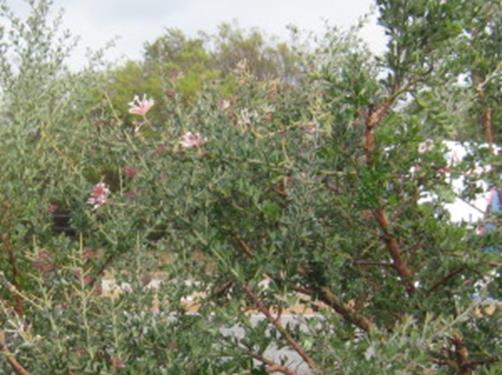
Grevillea vestita, this is the pink flowering form. It flowers twice and year for a long period each time.
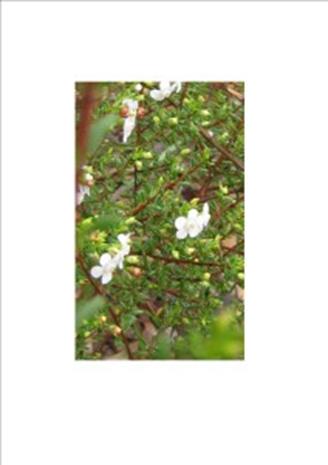
Chamelaucium ciliatum or commonly called Albany Wax is just breaking into flower in our garden. It has masses of attractive little white flowers.
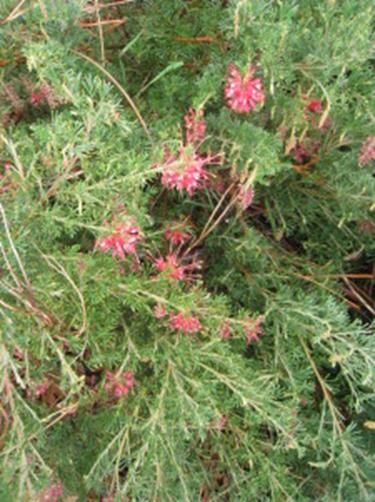
Grevillea Ellendale Dragon is a low growing attactrive shrub with grey/green leaves. It is very waterwise.
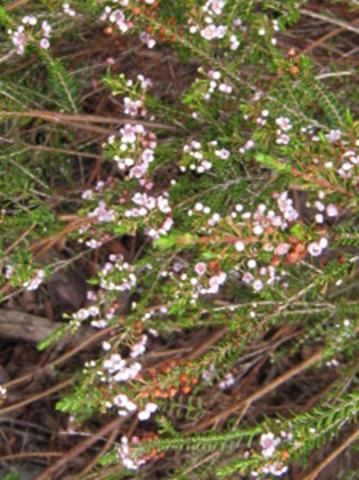
Thryptomene saxicola is a very waterwise, long lasting, adaptable shrub. A good addition to almost any garden where there is good drainage.
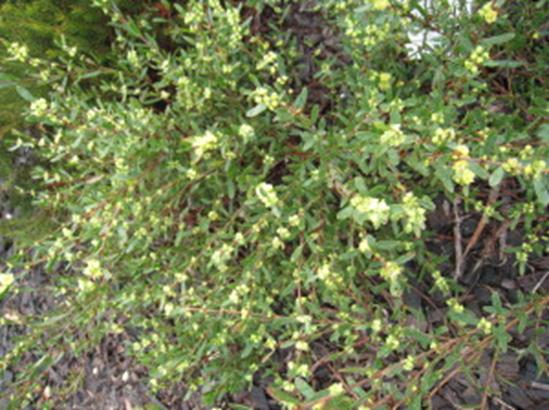 Hypocalymma xanthopetalum is a small shrub which flowers all year regardless of whether it is irrigated or never receives any irrigation.
Hypocalymma xanthopetalum is a small shrub which flowers all year regardless of whether it is irrigated or never receives any irrigation.
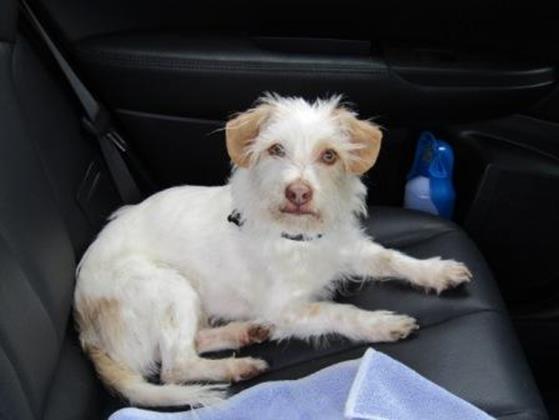
Montie who considers that he owns the road verge outside his house in the suburb of East Victoria Park.
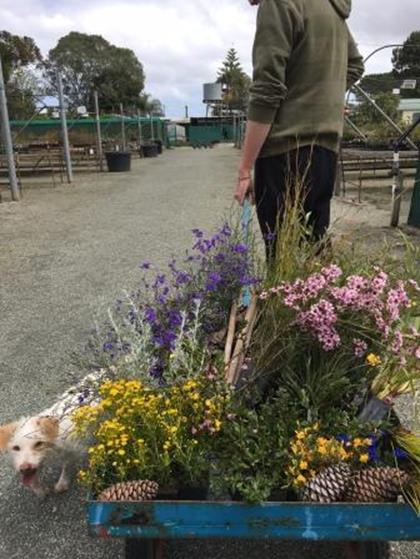
Here is Montie last week helping to choose tubestock in our nursery of Western Australian natives plants for adding to the his road verge and front garden.
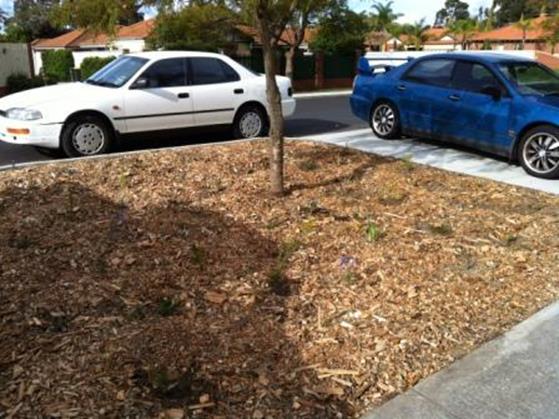
August 2014 the planting of Montie's road verge was started.
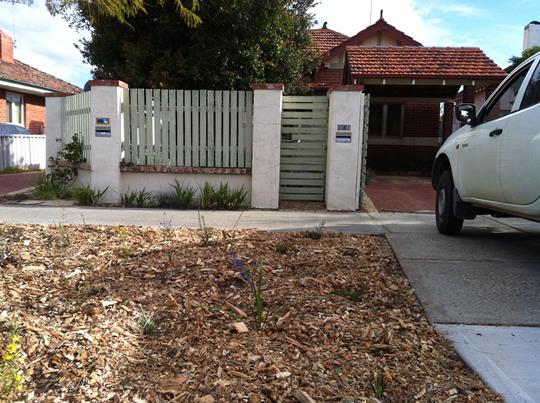
Another photo of this newly planted W.A. native road verge August 2014.
This photo was taken just after the planting using tubestock plants in August 2014. The best way to achieve success when planting is to use native tubestock plants that can grow in the soil type of the road verge. The soil type of East Victoria Park is grey Bassendean Sand. Plants suitable for this soil type were chosen.
It is important when planting to dig deep and wide holes. This breaks the compaction of the sand and makes it much easier for the roots of the native plants to penetrate downwards. This planting method will create a very waterwise verge that will require little or no watering, particularly during the summer months. When plants have been grown in square tubes the roots do not root bind (go round and round in the tube or pot). This helps the plants to establish much quicker. Using a rough mulch such as in this photo is helpful as it keeps the surface of the sand cooler in summer and it also helps to supress weeds. However, mulching is not essential. If you want to plant up your verge or garden with natives on a tight budget, just buy tubestock and be prepared to dig big holes. Do not install irrigation. Once established this road verge will survive with little (from a hose and tap) or no irrigation. When doing the 'little' irrigation, it does not mean 'little and often' which encourages shallow rooted, unhealthy plants. It means that the plants should be watered seldom but thoroughly.
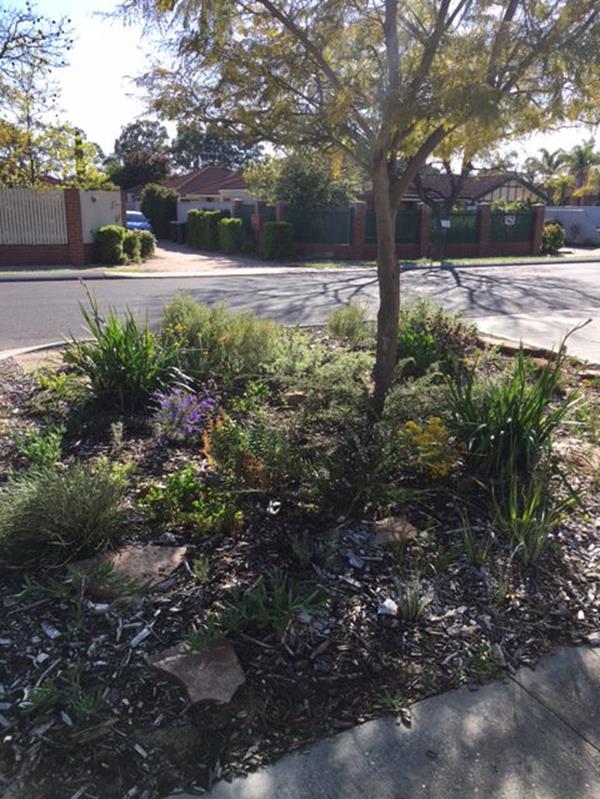
2016, in 2 years the verge has grown from nothing to this attractive W.A. native road verge.
This road verge E. Victoria Park is different to all the other verges in the street. A few look like the ones on the opposite side of the road in the above photo. They are manicured lawn and require a lot of water to keep them a beautiful green. This type of road verge not only requires valuable water, but also maintenance work like regular mowing and weeding. Almost all of the other verges in this street in East Victoria Park are just brown grass and weeds. They do not require any water and maintenance but they are so unattractive and HOT! Having a nice ever-green (which W.A. native always are) road verge, particularly if a tree or trees can be included, this helps to keep the street and neighbouring homes much cooler. The residents will also discover that they attract birds.
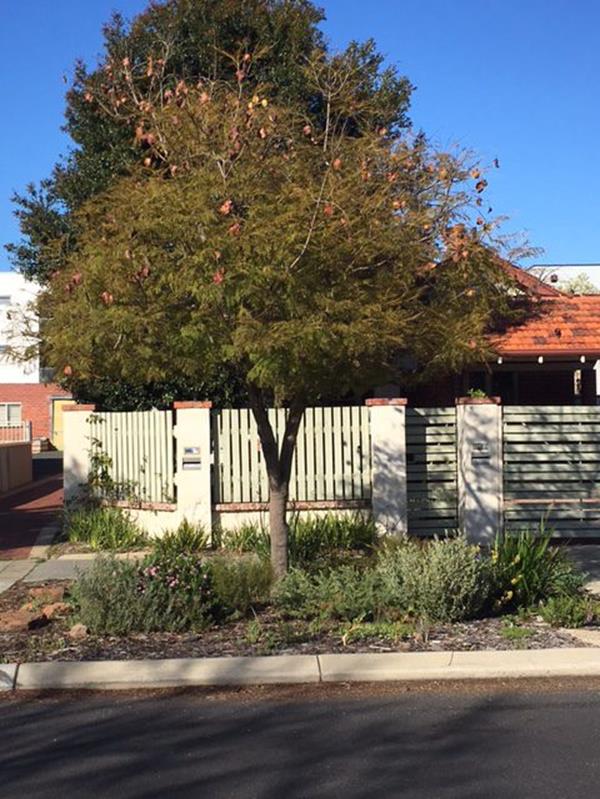
Another photo of this W.A. native road verge in 2016.
]
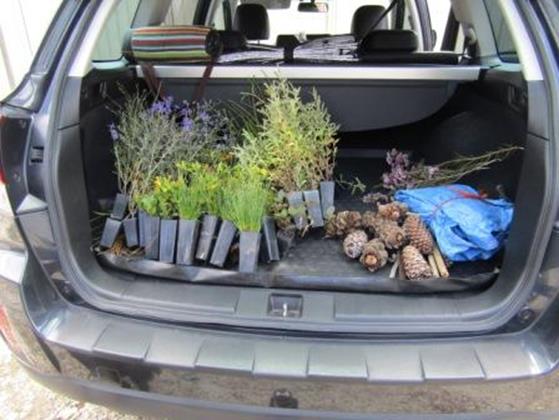
Using tubestock when you are planting is not only the best way to establish an Australian native garden, the plants are easily purchased from our retail nursery and can be transported in the car boot.
Hello Nancy.
Thank you for your expert advice. With your help and guidance I have transformed my yard and life! Literally. I am so into Native Plants. I think you will like the before and after shots!
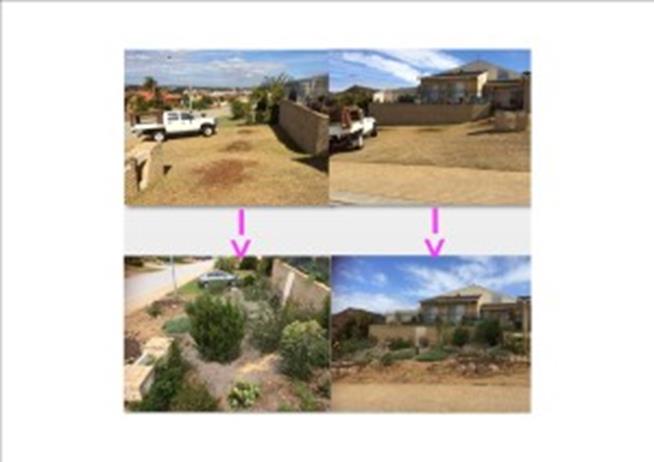
Steve said "I used to drive down the street looking at girls; now I drive down the street looking at Native plants!"
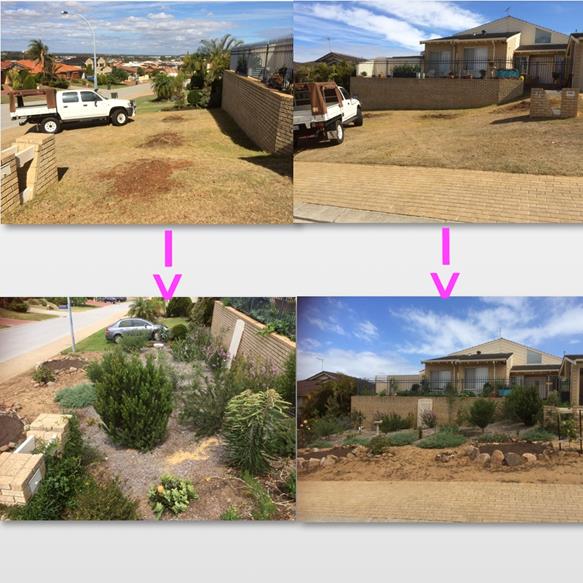
Steve's comment about his Australian native garden "I used to drive down the street looking at girls; now I drive down the street looking at native plants!"
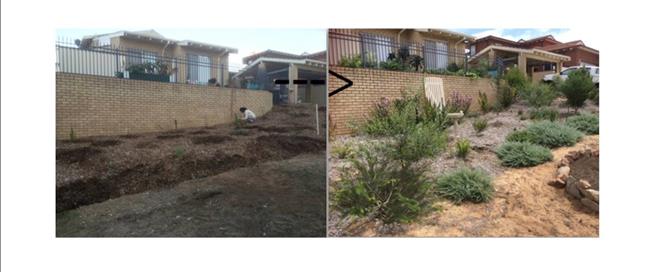
Another of Steve's comments about his Australian native garden "No water, no maintenance, more birds, more beauty".
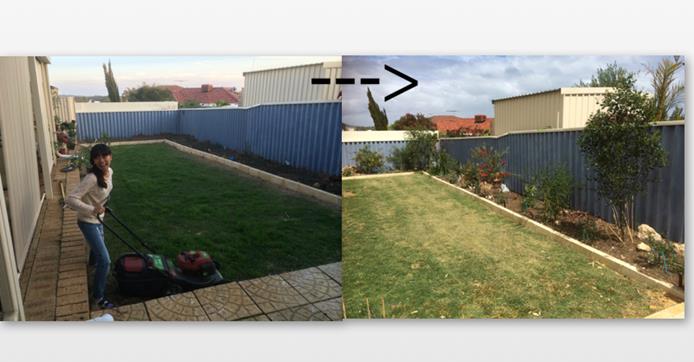
Steve's Australian native garden at the back of his house. Steve's wife, Janet, is having to do the hard work maintaining the lawn!
There is a common perception that 'bigger is better' but research has shown that small plants grown in tubes suffer less transplant shock and rapidly establish a healthy root system which encourages rapid growth. That's why we specialize in tubestock and why we recommend that's what you buy. All of our tubes have root training ridges, so that when the roots hit the edge, they are directed straight to the open bottom of the tube. When the roots reach the bottom of the tube, their tips die, causing the root system to branch out. This encourages a robust, well structured root system that when planted, is ready to go out into the soil.
To make your shopping experience easier all of our tubestock is laid out on benches that stretch across our retail area according to their height:
All of our tubestock is clearly labelled with photos and detailed information on where it naturally occurs, when it flowers etc to make it easy to decide which plants to buy for your back yard.
Customers are free to take home our small white descriptive labels to remind themselves of a plant that they wish to purchase in the future.
Plant in the cooler months - autumn, winter or early spring - when there's usually a higher rainfall, reducing the need for watering.
If planting in the ground, loosen the soil to twice the length of your spade and twice as wide. This allows the root system to spread without much difficulty. Place the plant in the created hole making sure that the top of the soil from the pot sits level with the top of the soil in the ground. Back fill the hole and firm the soil down around the plant.
Indigenous plants have evolved on the local un-amended soils. No soil improvement should be necessary if the correct plants have been chosen. Improving the soils will, however, give your new plant an easier time of it. For example if you are planting into sand the addition of bentonite clay will help to retain water around the plants root system.